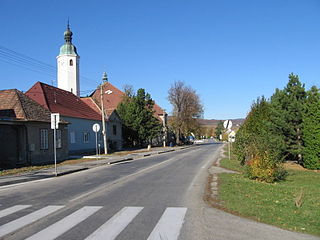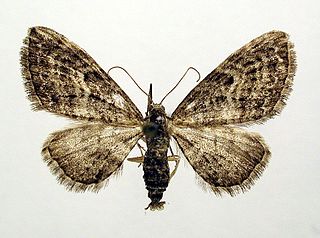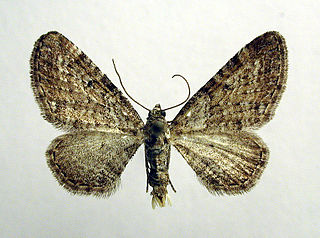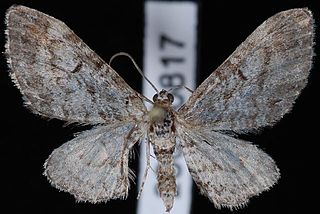
Laetitia Marie Laure Casta is a French actress and model.

Mestizo is a term historically used in Spain and Hispanic America that originally referred to a person of combined European and Indigenous American descent, regardless of where the person was born. The term was used as an ethnic/racial category for mixed-race castas that evolved during the Spanish Empire. Although broadly speaking, Mestizo means someone of mixed European/indigenous heritage, the term did not have a fixed meaning in the colonial period. It was a formal label for individuals in official documentation, such as censuses, parish registers, Inquisition trials, and other matters. Individuals were labeled by priests and royal officials as mestizos, but the term was also used for self identification.

A casta is a term which has been interpreted by certain historians during the 20th century to describe mixed-race individuals in Spanish America, resulting from unions of Spaniards, Amerindians, and Africans. Basic mixed-race categories that appeared in official colonial documentation include Mestizo, generally offspring of a Spaniard and an India; Castizo, offspring of a Spaniard and a Mestiza; Mulatto, offspring of a Spaniard and a Negra; Morisco was the offspring of a Spaniard and a Mulatta. There were a plethora of terms for mixed-race persons of indigenous and African ancestry, some of which appear in official documentation, but many do not.

Eupithecia is a large genus of moths of the family Geometridae. There are hundreds of described species, found in all parts of the world, and new species are discovered on a regular basis.

The lime-speck pug is a moth of the family Geometridae. It is a common species throughout the Palearctic region, the Near East and North Africa.

The common pug(Eupithecia vulgata) is a moth of the family Geometridae. It is a common species across the Palearctic region, the Near East and North Africa. It ranges from the Atlantic coast of Ireland and Portugal across Europe, the Middle East and Central Asia to the Russian Far East (Priamurje) and Korea.

Portuguese wine is the result of traditions introduced to the region by ancient civilizations, such as the Phoenicians, Carthaginians, Greeks, and mostly the Romans. Portugal started to export its wines to Rome during the Roman Empire. Modern exports developed with trade to England after the Methuen Treaty in 1703. From this commerce a wide variety of wines started to be grown in Portugal. And, in 1758, one of the first wine-producing regions of the world, the Região Demarcada do Douro was created under the orientation of Marquis of Pombal, in the Douro Valley. Portugal has two wine-producing regions protected by UNESCO as World Heritage: the Douro Valley Wine Region and Pico Island Wine Region. Portugal has a big variety of local kinds, producing a very wide variety of different wines with distinctive personality.

The juniper pug or juniper looper is a moth of the family Geometridae. The species was first described by Michael Denis and Ignaz Schiffermüller in 1775. It is found throughout the Palearctic and Nearctic regions and the Near East.

Castizo is a Spanish word with a general meaning of "pure", "genuine" or representative of its race being three quarters white Hispanic and a quarter native. The feminine form is castiza. From this meaning it evolved into other meanings, such as "typical of an area" and it was also used for one of the colonial Spanish mixed-race categories, the castas. The category Castizo/a was widely recognized by the 18th century in colonial Mexico and a standard category in eighteenth-century casta paintings. In the taxonomic chart accompanying a work on casta paintings, castizo is given as "uncertain origin" and appears in 1543 with the meaning "class, condition, social position".

Častá is a village and municipality in western Slovakia in Pezinok District in the Bratislava Region, on the foothills of the Little Carpathians. The village is best known for the Červený Kameň Castle, which is above the village.

San Pedro de Casta District is one of thirty-two districts of the province Huarochirí in Peru. The town of San Pedro de Casta is known for its proximity to Marcahuasi, and receives the majority of its attention from this tourist attraction.

Eupithecia innotata, the angle-barred pug, is a moth of the family Geometridae. The species was first described by Johann Siegfried Hufnagel in 1767. It ranges from Spain in the west to western Siberia and Central Asia in the east.

The larch pug is a moth of the family Geometridae. The species can be found in Europe, the Ural Mountains, West and Central Siberia, the Altai Mountains, Transbaikalia, Yakutia, the Far East, Mongolia, Korea, Japan and in North America, from Yukon and Newfoundland to New York and Arizona.

Eupithecia simpliciata, the plain pug, is a moth of the family Geometridae. It is found in the Palearctic ecozone, from western Europe to north-western China (Xinjiang).

Eupithecia venosata, the netted pug, is a moth of the family Geometridae. It was first described by Johan Christian Fabricius in 1787. It is found across the Palearctic ecozone from Portugal and Morocco in the west to the Lake Baikal in Siberia and Afghanistan and Pakistan in the east.
Swainsonia casta, common name the chaste mitre, is a species of sea snail, a marine gastropod mollusk in the family Mitridae, the miters or miter snails.

Eupithecia pernotata, or Guenée's pug, is a moth of the family Geometridae. The species was first described by Achille Guenée in 1857. It is known from the Alps, through Romania to southern Russia. It is also found in Finland.

Casta Diva is a 1935 Italian musical drama film directed by Carmine Gallone and starring Mártha Eggerth, Lamberto Picasso and Gualtiero Tumiati. The film won Best Italian Film at the 1935 Venice International Film Festival. An English-language version The Divine Spark was made at the same time, also directed by Gallone and starring Eggerth. Gallone remade the film in 1954 in Technicolor.
Eupithecia variostrigata is a moth in the family Geometridae. It is widespread in the western Palaearctic, ranging from Spain to the western Pamirs in the east.

Eupithecia graefi, or Graef's pug, is a moth in the family Geometridae. The species was first described by George Duryea Hulst in 1896. It is found in North America from south-western Alberta west to Vancouver Island, north to Alaska and south to California. The habitat consists of wooded areas.
















